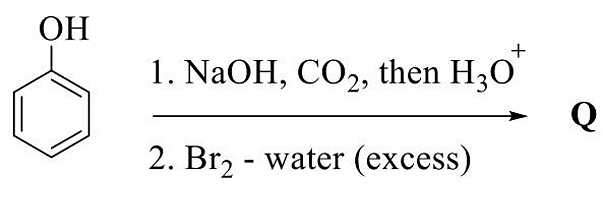Which ionization technique in mass spectrometry is most suitable for large biomolecules like proteins:
Show Hint
- Chemical Ionization (CI)
- Physical Ionization (PI)
- Electron Impact (EI)
- Electrospray Ionization (ESI)
The Correct Option is D
Solution and Explanation
Step 1: Understanding mass spectrometry ionization techniques. Mass spectrometry involves ionizing molecules for analysis based on their mass-to-charge ratio. Different ionization techniques are used depending on the type of molecule being analyzed.
Step 2: Suitability of ESI for large biomolecules. Electrospray Ionization (ESI) is highly suitable for large, polar biomolecules like proteins due to its gentle ionization process. It converts biomolecules into ions without significant fragmentation, preserving their structure.
Step 3: Why other options are not suitable.
- (A) Chemical Ionization (CI): Suitable for small to medium-sized molecules, not large biomolecules.
- (B) Physical Ionization (PI): Not a recognized standard ionization technique in mass spectrometry.
- (C) Electron Impact (EI): Causes extensive fragmentation, making it unsuitable for delicate biomolecules like proteins.
Top Questions on Mass spectrometry
- The major product in the given reaction sequence is Q. The mass spectrum of Q shows
([M] = molecular ion peak)
- GATE CY - 2024
- Inorganic Chemistry
- Mass spectrometry
- Which among the following characteristics of Laser light specifies the precise movement of all individual light waves together through time and space?
- AP PGECET - 2024
- Instrumentation Engineering
- Mass spectrometry
- Recombination of electron-hole produces ____ in LEDs.
- AP PGECET - 2024
- Instrumentation Engineering
- Mass spectrometry
- Magnetic sector analyzer is a part of
- AP PGECET - 2024
- Instrumentation Engineering
- Mass spectrometry
The spectrum of a protein obtained using electrospray ionization mass spectrometry (ESI-MS) is shown below. Two peaks, one at m/z = 2960.6 and the other at m/z = 3552.5, are marked. The mass of the protein associated with the m/z = 2960.6 peak is ______ Da. (Round off to two decimal places)

- GATE XL - 2024
- Biochemistry
- Mass spectrometry
Questions Asked in GPAT exam
- Blood concentration ratio of the combination of trimethoprim and sulfamethoxazole after being given in a 1:5 ratio is
- GPAT - 2025
- antimicrobials
- Which of the following alkaloids are found as salts of meconic acid?
- GPAT - 2025
- Introductory Pharmacognosy
Choose the correct match of laxative and its Mechanism of Action (MOA):

- GPAT - 2025
- Laxative
Match the following:
(P) Schedule H
(Q) Schedule G
(R) Schedule P
(S) Schedule F2
Descriptions:
(I) Life period of drugs
(II) Drugs used under RMP
(III) List of Prescription Drugs
(IV) Standards for surgical dressing
- GPAT - 2025
- Drug therapy
- Which anemia is caused due to Microcytic, hypochromic red blood cells?
- GPAT - 2025
- Organic Chemistry